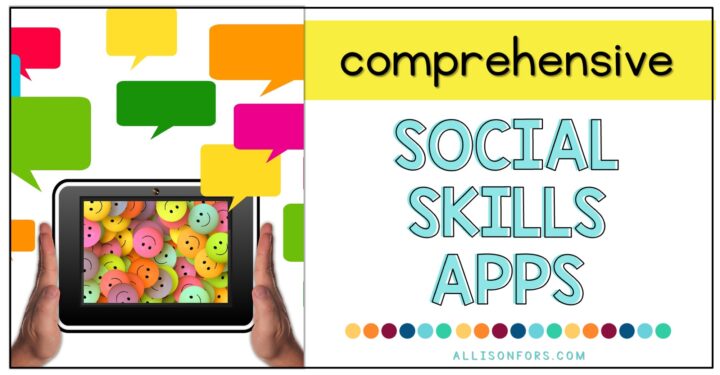
How to Use Sensory Bottles in Speech Therapy
I’ve recently discovered how much fun it is to make sensory bottles! It got me thinking about how you can incorporate them in speech therapy sessions or in your classroom. Since sensory bottles are so open-ended in how you make them, there are tons of ways to use them.
What are sensory bottles?
They are bottles that are filled with various materials to encourage sensory play – but without the mess! They are also a great way for children to experience materials that are otherwise too small for them to play with.
The most common bottles used are VOSS brand because they are big, sturdy, and have a wide opening. I used Sparkling Ice bottles because they are smaller which is ideal for younger children. You could even make mini ones in spice jar containers!
There is no right or wrong way to make a sensory bottle – put anything you want in it. You can have wet or dry sensory bottles. I have included lots of filler ideas below!
You can find more sensory bottle ideas (and general sensory ideas) on this Pinterest board.
Download this handout for free!
Ideas on how to use sensory bottles in speech therapy
REINFORCER
Sensory bottles are quite novel and engaging for most kids. Use them as a reward! Even use it as a conversational piece or a way to build rapport with kids who are harder to reach and engage.
CALM DOWN BOTTLES
The idea of a calm down bottle is giving a child something constructive to do while self-regulating their behavior. It provides the child with something hands-on to focus on while decompressing. These bottles tend to be simpler and have a liquid that slows down the movement of the contents. Thicker liquids include glitter glue, hair gel, and oil. Shake or turn the bottle upside down and watch the contents settle while taking deep breaths.
LANGUAGE
Sensory bottles provide many language opportunities. Seasonal or holiday-themed bottles are great for relevant vocabulary. Work on core vocabulary such as “go” and “stop”.
I love using them to work on describing! Describe what is inside by colors, textures, sizes, shapes, etc. Target many basic concepts – Is the bottle heavy or light? Loud or quiet? Wet or dry? Are there a lot or a few items inside?
Work on expanding sentences with these descriptors. Ask WH questions “What do you see?” “Where is the x?” “Why does it do that?” “How do you think I made this sensory bottle?” “Which one is your favorite?”. You can even have your student formulate WH questions to ask you or another student.
ARTICULATION
Create an “I spy” bottle! Fill the bottle with items of your target sound or multisyllabic words. You can find small trinkets, mini erasers, or use dinky doodads (this is what is in the rice bottle). This is an especially good way to work on generalizing articulation sounds in sentences or conversation. Create carrier phrase sentences loaded with the target sound. For example, “I see/spy the small…” or “Look at the little…”.
FOLLOWING DIRECTIONS/SEQUENCING/RETELL
For older students, a great language activity would be to create a sensory bottle! They are simple and inexpensive to make. Provide visual or auditory instructions to make the bottle. Incorporate sequencing, following multi-step directions, and descriptive language. After they have completed they can retell the steps! Next time, you can have the student give directions to you or another student on how to make it.
SOCIAL SKILLS
Use the sensory bottle to practice sharing by turn taking. You can also target problem solving skills.
Have the students who created their own bottles find someone and initiate a conversation. Prepare them before by brainstorming some questions they can ask or things they can share about their sensory bottle. For example, they can share how they made it, or ask if they know what a sensory bottle is, or if they would like to see it.
Have you used sensory bottles in speech therapy? How do you use them?
You may be interested in this post: Why You Should Be Using Sensory Bins in Speech Therapy
If you enjoyed this post, please share it!
Follow my blog with Bloglovin
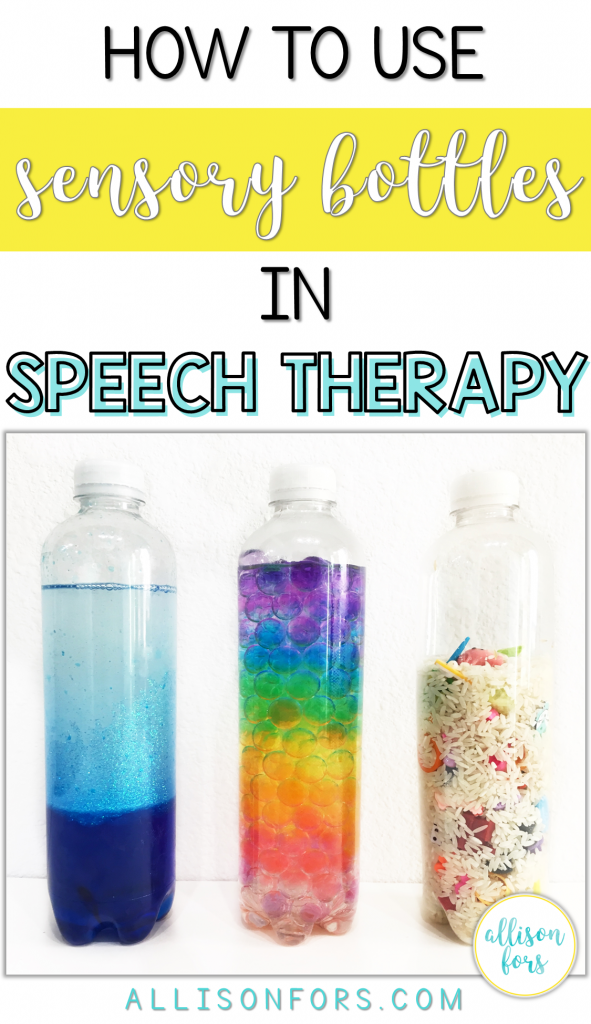


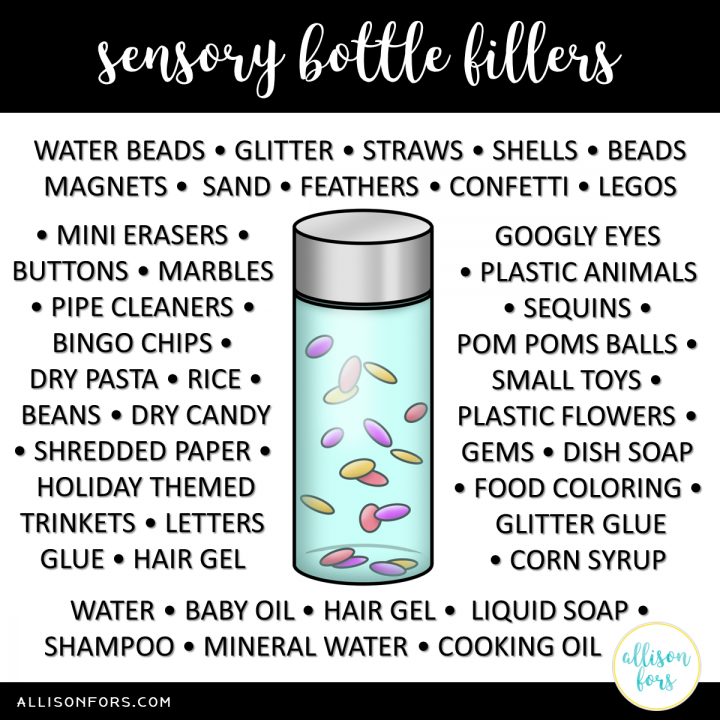

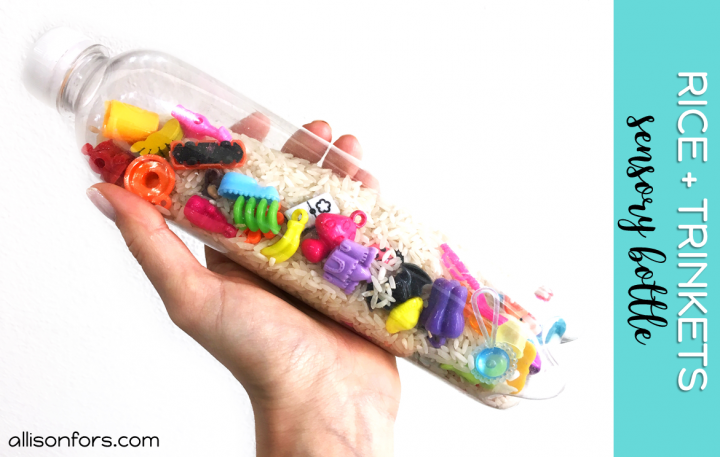

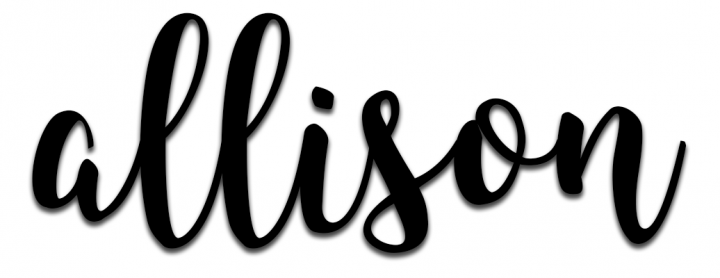

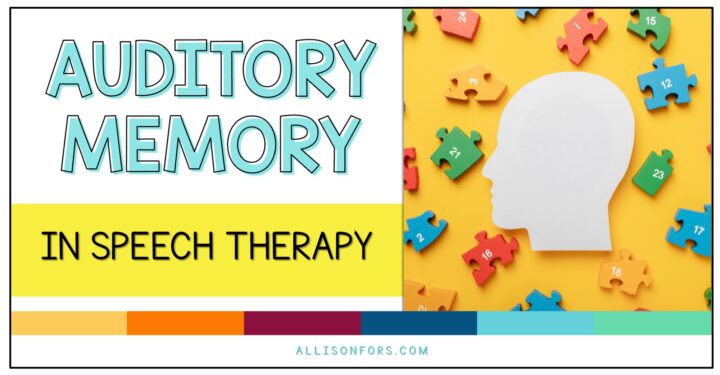



3 Responses
Why isn’t the water beads sensory bottle filled to the top?
It allows room for them to move! You can fill all the way to the top if you’d like.
This is a great article Allison! Really helpful for my littlest who is virtually non verbal at 27m. Thanks for sharing!